#from ancient roman graffiti
Explore tagged Tumblr posts
Text
the one who buggers a fire burns his penis
3 notes
·
View notes
Text

300,000 Kisses: Tales of Queer Love from the Ancient World
Seán Hewitt (Author) Luke Edward Hall (Author)
A landmark illustrated anthology of queer Greek and Roman love stories that reclaim and celebrate homosexual love and sensuality, from artist Luke Edward Hall and award-winning poet Seán Hewitt.
For centuries, evidence of queer love in the ancient world has either been ignored or suppressed. Even today, only a few narratives are widely known: the wild romance of Achilles and Patroclus; the yearning love of Sappho's lyrics; and the three genders introduced in
Plato's Symposium. Yet there is a rich literary tradition of queer Greek and Roman love that extends far beyond the prudish translations of these familiar handful of stories. In 300,000 Kisses, award-winning poet Seán Hewitt and renowned designer Luke Edward Hall collect these stories--including some of the most beautiful and moving in the classical canon--and bring them to vivid life. Alongside celebrated works by Homer, Sappho, Ovid and Catullus, they include a wide range of rarely anthologized sources: raunchy poems, thoughtful dialogues, philosophical treatises, and even a graffiti text salvaged from the ruins of Pompeii. Through Hewitt's contemporary translations and Hall's vibrant illustrations, we encounter relationships that are by turns heartfelt and nourishing, unrequited and lustful, toxic and crude, tender and fulfilling. A groundbreaking anthology that seeks to change the way we see the ancient world, 300,000 Kisses is a fascinating journey through love in all its forms.
(Affiliate link above)
#queer history#queer#lgbt#lgbt history#gay history#lesbian history#transgender history#transgender#making queer history#queer books#lgbt books
691 notes
·
View notes
Text
Ancient graffiti on the tomb of Ramses IV, Egypt
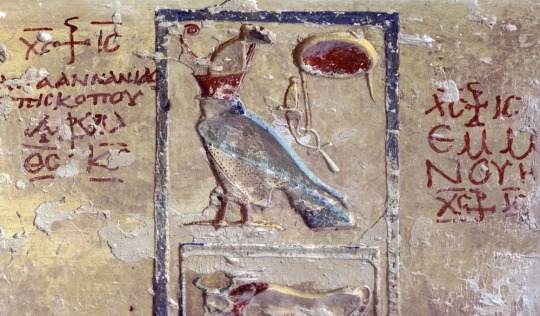


The tomb was visited by Romans, Greeks and many more. The inscriptions, some of which were made over 2,000 years ago, reveal what travellers to one of the world's oldest attractions thought of the memorials to long-dead rulers in the Valley of the Kings.
Among the carvings were the phrases 'I visited and I did not like anything except the sarcophagus!', 'I admired!', 'I, Ammonios from Italy, saw and admired it" and 'I can not read the hieroglyphs!'
875 notes
·
View notes
Text
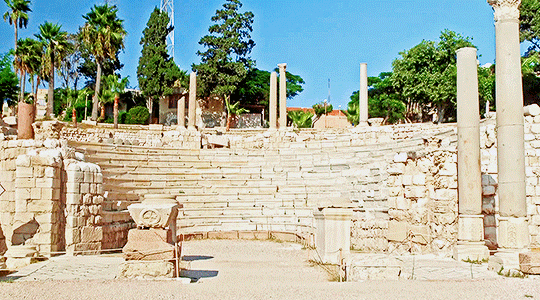

ANCIENT EGYPT BY TRAIN (2023) — 1.01 Alexandria
ROMAN THEATRE (Kom El Deka (كوم الدكة), Alexandria) The small Roman theatre was used for various forms of entertainment. It was constructed in the 4th century and ran until the early 7th century, with a remodeling around 500. Its early use may have been for city council meetings as well as entertainment. Graffiti in the seats from the 6th century shows support for the Blue and Green factions, popular teams of charioteers, though the theatre was not large enough for racing. The exact forms of entertainment at the theatre are unknown, but there is evidence for musical performances and wrestling. After the construction of the academic complex, the theatre may have also hosted academic activities such as public orations and rhetorical speeches. The construction of the theatre is an extended hemicycle with raked auditorium seats. The seats are made of marble recycled from older structures. The walls and vestibule are made of limestone. At its top are a row of unmatched columns, recycled from other structures. [x]
#egypt#ancient egypt#egyptology#archaeology#historyedit#documentary#gifsbyancientegyptdaily#doc: ancient egypt by train#alice roberts#roman egypt#alexandria
85 notes
·
View notes
Text
Shoemaker on literacy, memory, oral tradition, and the Quran:
Studies of literacy in pre-Islamic Arabia have been severely overlooked in recent Quran scholarship; in fact, literacy in the 7th century Hijaz was "almost completely unknown" and "writing was hardly practiced at all in the time of Muhammad." "[T]here seems to be a widespread agreement among experts on the early history of the Arabic language 'that, before and immediately after the rise of Islam, Arab culture was in all important respects fundamentally oral.'" Ancient graffiti in the region seems to have been a bit like early runic writing in Scandinavia--not central to the culture, mostly decorative and incidental, and certainly not used for long, important texts. "There is, in effect, a lot of 'Kilroy was here' scattered across the Arabian desert." Indeed, most of these graffiti are personal names or private in nature--we're not talking monumental inscriptions here, we're talking bored herders scratching stuff onto rocks to pass the time.
Southern Arabia and the larger oases to the north had more in the way of literate elites (and thus things like monumental inscriptions), but these places were far from the central inland Hijaz. If someone in this region did want to become literate, they would probably have learned to read and write in Greek or Aramaic, which were useful and important linguae francae.
As in very early Christianity, writing occupied a controversial position vis a vis orality--oral tradition was primary for the production and transmission of culturally important things like religious texts, poetry, literary prose, genealogy, and history. The shift to a literate culture came only with the expansion of Muhammad's polity into a wealthy, multicultural empire rather than a tribal state. Indeed, much of the early Caliphate's administration used Greek and other languages--Arabic entered administration only slowly, since a lot of early bureaucrats were drawn from the Roman and Sasanian bureaucracy.
And like early Christianity, another reason not to feel any urgency to write down Muhammad's teachings was that early Muslims expected the end of the world to come very soon, maybe initially even before Muhammad's own death.
The dialect of the Quran is distinctive and unusual; it is very difficult to locate where this dialect might have originated. Ahmad Al-Jallad tentatively identifies an Old Hijazi dialect, but the evidence for this dialect (besides the Quran itself) is limited and mostly much more recent, and he assumes the Quran was produced in the Hijaz.
The Arabic of the Quran can probably be identified with the prestige dialect of Levantine Arabic in the Ummayad period, but the origin of that dialect, and what Arabic dialects were brought together there in that time, is hard to ascertain with certainty.
Shoemaker thinks the Quran started as short collections drawn from individual memories following the conquest and encounters with widespread literacy; these collections would have been considered open, and subject to influence from oral tradition. They were combined into increasingly larger collections, with additional traditions and revisions, emergin as something like divergent versions of the Quran (though still not fully static and closed). Finally, the traditions of these regional versions, with other written and oral traditions, were fashioned into their canonical form under Abd al-Malik, and this version was progressively enforced across the empire.
Shoemaker brings in memory science and the anthropology of oral cultures: memory is highly frangible and fallible. Even though it functions well for day to day tasks, it's important not to overlook how common misremembering and re-remembering alters information in both personal and collective memory when talking about a text that even Islamic tradition agrees was not written down within Muhammad's lifetime.
Most forgetting occurs shortly after an event in question; a small core of memories we develop about an event will persist for a significant time after. These findings have been corroborated both in the lab and in the circumstances of everyday life.
Memory is not primarily reproductive; literal recall is, in evolutionary terms, pretty unimportant, and brains omit needless detail. Remembering thus involves a lot of reconstruction more than it does reproduction; memories are storied piecewise in different parts of the brain, and are assembled on recall, with the gaps being filled in using similar memory fragments drawn from comparable experiences.
Note Bartlett's experiments using a short Native American folktale; when asked to recall this story, even after only fifteen minutes participants introduced major and minor changes. Subsequent recall didn't improve accuracy, though the basic structure of the memory developed pretty quickly in each individual. But this structure was not especially accurate, and significant details vanished or were replaced with new information. Most often this information was drawn from the subject's culture (in this case, Edwardian England), forming a memory that made more sense to them and had more relevance in their context. The overall style was quickly lost, and replaced by new formations, and there was a persistent tendency to abbreviate. After a few months, narrative recall consisted mostly of false memory reports, a finding verified by subsequent replications of his experiments.
Experiential and textual memory in particular degrades very rapidly; this degredation is much faster when information is transmitted from one person to another. Epithets change into their opposites, incidents and events are transposed, names and numbers rarely survive intact more than a few reproductions, opinions and conclusions are reversed, etc. Figures like Jesus or Muhammad will hardly be remembered accurately even by people who knew them.
The style of the Quran (e.g., prose, and often terse, elliptic, and occasionally downright nonsensical prose at that) does not lend itself to memorization; Shoemaker argues it is only possible for people to memorize the Quran now because it has become a written document they can consult in the process.
Eyewitness testimony is of course also notoriously unreliable, despite what apologists (in particular Christian apologists) have argued. Cf. Franz von Liszt's experiment in 1902, where a staged argument in a lecture escalates to one student pulling a gun on another--after revealing this event was scripted and staged, and asking different students to recall the details of the event at different intervals afterward, literally none of them got it right--the best reports, taken immediately, got things about one quarter correct. Even repeatedly imagining a scenario vividly enough can eventually lead to a false memory of it occurring (a phenomenon which may explain some alien abduction reports). People mistake post-even hearsay or visualization for firsthand knowledge, especially in the case of dramatic events.
What memory excels at is remembering broad strokes--we are adapted to retain the information which is most likely to be needed, i.e., the gist (or, more likely, the broad themes) of events and information, and not its exact form.
There's a long digression here about John Dean's testimony on the Watergate conspiracy--this may be the first book in early Islamic studies to have Richard Nixon in the index.
Even competitive memory champions train for short-term recall of large amounts of information; they, and other people with preternaturally good memories, are of course exceedingly rare. It's very unlikely that someone could remember, several decades after the fact, precisely (or even mostly) what was told to them by their friend whose brother's wife's cousin was really there. So even within the traditional account of the Quran's composition, it makes no sense to claim it is in fact the verbatim word of Muhammad.
As in the case of Solomon Shereshevski, when you do have preternaturally good recall even for (say) lists of nonsense syllables, the result is actually kind of debilitating--you have so many useless details to sort through, it makes it quite hard to function at an abstract level. And hyperthymesiacs, though they exhibit a high level of recall about their past, still often remember things incorrectly, at about the same rate as people with normal memories--they are no less susceptible to false or distorted memories.
Nevertheless most modern scholars treat the Quran as a verbatim transcript of Muhammad's words. This is exceedingly unlikely! Especially given that "group" or "collaborative" memory--memories as reconstructed by individuals working together--appears to be even less accurate than individual memory. You get better results having people try to recall events by themselves.
Since during the age of conquests the majority of converts were not closely preoccurpied with the interpretation of the Quran, it would have had to have been rediscovered and hermeneutically reinvented later; the memory of Muhammad's words were being shaped by the nature of the community he founded, as its members collective and individual needs continued to evolve along with the context of transmission.
Many people, both scholars and the general public, seem to believe that people in oral cultures have remarkable capacities for memory not possessed by those of written cultures. Study of oral cultures has shown this is demonstrably false; literacy in fact strengthens verbal and visual memory, while illiteracy impairs these abilities. People in literate cultures have better memories!
Oral transmission is not rote replication; it is a process of recomposition as the tradition is recreated very time it is transmitted. Oral cultures can effectively preserve the gist of events over time, but each time the details are reconstituted, and the tradition can radically diverge from its first repetition, with the stories of the past being reshaped to make them relevant to the present and present concerns.
The collective memory of Muhammad and the origins of Islam as preserved in the Sunni tradition would have forgotten many details as a matter of course, many others because they were no longer relevant to the later Sunni community, and they would have been reshaped in ways that made them particularly suited to the life and community of their contemporary circumstances, exemplifying and validating their religious beliefs--ones very different from those of Muhammad's earliest followers.
The early Muslim conquests put a comparatively small number of soldiers, scattered across a huge territory, in a wildly different cultural and social context, especially in close contact with different Christian and Jewish communities, esp. in the Levant, which rapidly became the cultural center of the new empire. Jews and Christians may have joined the new religious community in large numbers in this time also; their faith and identity would have continued to evolve in this period, as we would expect from comparative episodes in the history of other religions. By the time that Muhammad's teachings were formally inscribed, the memories of his few hundred initial companions would have been transmitted and dispersed to a large number of people in a totally different set of circumstances, with consequences for how those memories exactly were recalled.
Jack Goody, researcher on oral traditions: "It is rather in literate societies that verbatim memory flourishes. Partly because the existence of a fixed original makes it much easier; partly because of the elaboration of spatially oriented memory techniques; partly because of the school situation which has to encourage "decontextualized" memory tasks since it has removed learning from doing and has redefined the corpus of knowledge. Verbatim memorizing is the equivalent of exact copying, which is intrinsic to the transmission of scribal culture, indeed manuscript cultures generally."
Techniques like the ars memoriae belong to literate cultures and were invented by literate people; they are unknown in oral cultures. Oral and literate cultures in fact have a radically different idea of what it means for a text to be "the same"--in the former, word-for-word reproduction is not necessary. A poem can be "the same poem" even if every time it is performed it is largely unique.
Case of the Bagre, the sacred text of the LoDagaa people of Ghana, an extended religious poem used in a liturgical context. Variations in its recitation aren't just variations in wording; changes in recitation can be radical, and the last version is always the starting point. Nevertheless (as in other oral cultures) it is considered "the same," functionally identical with each recitation. These differences appeared even among different performances by the same reciter, or multiple times in the same ceremony. Even the most formulaic parts have great variability. Similar variability in oral texts in other oral cultures has been documented by other anthropologists, including for historical events.
Shoemaker notes that the tradition that the Vedas were transmitted without variation from the time of their composition remains an article of faith in some quarters of South Asian studies; this flies in the face of all available evidence. In fact we have no idea what the state of the Vedic texts was prior to the earliest manuscripts; they may have been written all along.
Collective memory is shaped by contemporary cultural imperatives--examples of Abe Lincoln, a white supremacist considered nothing special by his peers; Christopher Columbus, once revered; the last stand at Masada, considered a minor event of little importance to broader Jewish history until the founding of Israel.
There doesn't have to be any conspiracy or coordinated effort for false narratives about the past to take root.
The hard horizon of communicative memory is around eighty years; so historical consciousness basically only has two modes: the mythic past of collective memory, and the recent past less than eighty or so years ago.
Lack of a clear "generic" monotheism in the Hijaz around the time of Muhammad's birth means the expectations and memory of Muhammad would have been profoundly shaped by Christian and Jewish beliefs.
Early Islam, like early Christianity, wasn't old enough to have a clear distinction between historical/origins memory and recent/communicative memory.
"For most of the seventh century, then, Muhammad’s followers had a memory that was still immersed in the social and cultural milieux of the late ancient Near East, from which they had yet to clearly differentiate themselves. They eventually would do this in large part by developing a distinctive collective memory for their group, different from those inherited from Judaism and Christianity, a process that was no doubt delayed by their fervent belief that the world would soon come to an end, making such an endeavor rather pointless for a time. Only as the end continued to remain in abeyance, and the community’s living memory grew ever distant from the time of origins did they develop a collective memory of their own. Yet, as Islamic collective memory began to evolve, one imagines that it initially took different shapes within the various pockets of Believers that were scattered across their empire. The basic elements of this nascent collective memory were, as Halbwachs says of the early Christians, “still dispersed among a multitude of spatially separated small communities. These communities were neither astonished, anxious, nor scandalized that the beliefs of one community differed from those of another and that the community of today was not exactly the same as that of yesterday.” Thus, we should expect to find a significant degree of diversity in religious faith and memory among the different early communities of the Believers, scattered and outnumbered as they were among the Jews and Christians of their burgeoning empire. Only with ʿAbd al-Malik’s program of Arabization and Islamicization was a new, distinctively Islamic collective memory and identity concretized and established for this new religious community. It was a collective identity that was formed from the top down and imposed, at the expense of any other alternative collective memories, with the full power and backing of the imperial state."
The limits of oral tradition apply even more strongly to the hadith and biographies.
70 notes
·
View notes
Text
Here I am walking up the ramp of the temple and at 46 seconds you hear a rustle; me disturbing a snake in pine needles. Given my history with snakes I just assumed I was about to ironically die at Epidaurus and thought it was fittingly ridiculous. But at :47 you see a pinwheel engraved into the marble floor, a graffiti motif I saw repeatedly at Eleusis. There I was told it was a game played by Ancient Greek children, but I have some doubts about that and will try to find more about them. If you know, please tell us. So one thing you have to know about Epidaurus is the smell is so heady I thought I’d swoon. There are lots of pines here and the forest floor is covered with decaying pine needles and rich acidic soil. Then there are wild oranges growing nearby and of course olive trees too. And the perimeter of the healing dormitory is surrounded by apple trees and I spotted a few pomegranate trees too. Fig trees are everywhere too. So the air is so sweetly scented with the balsam pine resin, pine needles, sweet oranges, various other fruit trees, and just healthy clean forest air. It was mildly warm yesterday so the aroma was intense and I could see pine resin just oozing from some of the trees. I couldn’t stop thinking about it the whole ride to Vitsa and it’s something I’ll never forget. This place is magical and I understand why the Greeks and Romans loved it so very much.
55 notes
·
View notes
Text
Thought it would be fun to do an intro post for each of the three households I'll be rotating through in my historic sims file. Also told my buddy @schitzophrenicrainbows I would make one of these. It'll also help me keep things organized as I play the challenge since I'm committing details to writing.
Up first and beneath the cut, we have a little history dump and our Gladiators.
Gladiators initially started out as poorer people and slaves who were inscribed to fight and train in the gladiator schools, Ludus Magnus. Over time as people began to see the fame and honor that could be won in the arena, though it was more rare, people did start to voluntarily join these gladiator schools.
Due to the popularity of gladiator fights, and how pricey it got to train and house them, not every single gladiator fight was to the death for its contestants. (For the purpose of Finn's story/challenge rules, his fights will be.)
There's debate whether the infamous "thumbs down" actually meant the opponent HAD to die or not. It could have just meant they were disgraced and couldn't compete anymore, but I can't find definitive answers one way or the other, and the opinions I found on this often contradicted each other. (I could probably text my sister with three degrees all about ancient to medieval Italian/Roman history, but how do I explain to her I need to know for my Sims game lmaooo) All that said, gladiators often didn't live past their mid-twenties given the hazards of the job.
Gladiators were also sex symbols (do yourself a favor and look up ancient Roman graffiti. Humans are the same now as they were then lmao). Idk how much that'll play into my game but Finn does have to find a partner and have kids so the legacy continues but we'll get there when we get there.
Rana

Rana is the gladiator who has been at the Ludus Magna the longest. Her traits: Creative, Self Assured, Loyal.
She came from a wealthy merchant family, but the family business didn't interest her much. She left home when she was young to find herself and ended up finding the arena. She picked up sword fighting quickly and proved her aptitude for not only fighting, but teaching others to fight as well. These days she only competes occasionally, as she has proven herself invaluable in creating more gladiators.
She's hitting a point where the losses of her pupils, and more importantly friends, are starting to weigh on her. She likely isn't going to just be allowed to retire, though, so she has to figure something else out.
Apollo
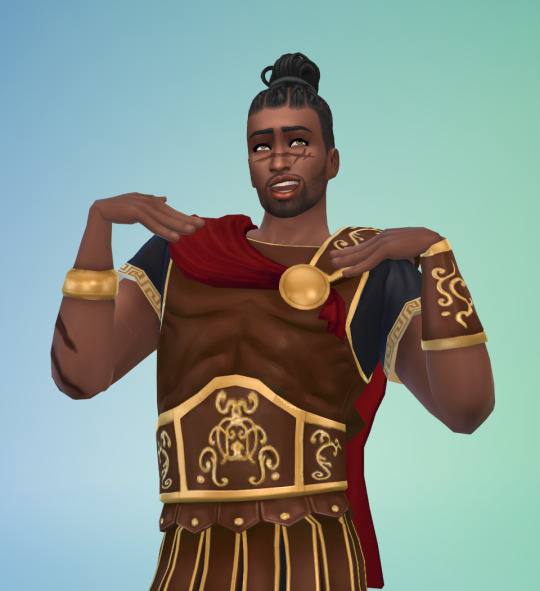
Apollo named himself after a Greek God because he thinks he's hilarious. (This is debatable if you ask anyone who has spoken with him for more than five minutes.) He ended up at the Ludus Magnus due to his sense of humor; turns out a Senator doesn't like it when you make jokes about their philosophical ideas, even if they are stupid.
He doesn't enjoy the gladiator lifestyle much if he's being honest, and is counting down the days until his "voluntary" contract with the school is over so he can use what money he's won and travel the world like he's always wanted to. His self absorption is part him being young, and part it being a front for the fear he has of not living out his dreams and he wears it like a protective front. His friends know better, though.
(He also thinks Spartacus is cute, but he's certain Spartacus is going to stay a gladiator till he dies and that doesn't work with what he wants in the long run.)
His traits are: Loves the Outdoors, Self Absorbed, and Outgoing.
Spartacus

Disclaimer: I did not make Spartacus lmao. I was hitting create-a-sim burnout so I hit up the gallery to find someone else's Roman themed sim. Although I did make some minor changes to his wardrobe, added scars and swapped out a couple of his traits, which are: Athletic, Proper, Loner. I ended up keeping his name because while it's on the nose for a gladiator, it fits.
Spartacus is a former member of the Roman Legionnaires. He was released from his service due to an injury he sustained abroad. Once he had healed, he found civilian life to be difficult to adjust to, so he signed a contract with the Ludus Magnus. He's here for a good time, not a long time.
But lately, he's been spending more time with Apollo, and he's starting to change his mind. But surely someone as handsome as Apollo wouldn't be interested in someone who'd rather spend his time meditating than socializing at a party...
Finn

Finn's traits are: Athletic, Loyal, Ambitious
Finn knew the risks he was taking when he killed Antonius, but he doesn't regret it. He's now plotting his escape, and if his new found friends can survive, he'll bring them with him if they like. He really just wants to get back to Britain to what's left of his family and help them take back what is rightfully theirs and drive the Romans out.
By challenge rules, he has 10 fights to get through first. I also have to receive a silver medal or higher on at least 50 events, and I'll probably use his fights to accomplish at least 10 of those. (I've done six so far).
Will probably go over Laelius' household next along with the parts of the challenge they'll be completing, followed by his daughter's. Who I don't think I've posted so far.
Other households:
The Emperor's Family
The Frugi Household
#i am very normal about the sims#the roman empire is currently my roman empire#ts4 history challenge
6 notes
·
View notes
Text
Fandom lads to get to know better!
@wretchedamaranth tagged me and I'm sorry I'm late But I got here ! (゚∀゚ )
3 ships you like:
• Vegaspete (Kinnporsche): I am very normal about them. Definitely haven't hyperanalyzed every scene of theirs and dedicated an entire blog just to them. I love when the two most fucked up people in the main cast get the best relationship and they get to unpack trauma together and heal as best they can in their fucked up world.
• Thominho (TMR): I started TMR a while ago and never really shipped anyone for a bit lmao, but something about the way these two did absolutely everything for each other and wouldn't leave the other behind got me.
• Fakiru (Princess Tutu): This is easily my favorite animated ship, I love a good enemies-to-lovers and there's just so much longing and angst with them.
First ship ever: BBRae. I remember watching Teen Titans as a child and that's how I learned what a ship was lmao - I still love these two.
Last song you heard: All the King's Horses by Forestella, they're one of my favorite groups of all time
Favourite childhood book: Detectives in Togas. It's about a book of Roman schoolboys who have to prove their classmate innocent from a crime committed against the Emperor, based on a real piece of graffiti found on an ancient temple. It's still one of my favorite books, it's hilarious and the characters are all engaging and entertaining.
Currently reading: Maze Runner Scorch Trials. I watched the movies recently and I'd read the first book a while back so now I'm continuing the books :3
Currently watching: Witch and the Beast, I love creepier fantasy anime.
Currently consuming: Cornbread that I made
Currently craving: Hamburger bake (basically a lasagna but you use more hamburgery ingredients and it's insanely good).
No pressure to do this but I'll tag @vegaspetesupremicy and @mintylix (any followers can too if you like !)
(*´ω`*)
7 notes
·
View notes
Text
108. The Secrets of Vesuvius, by Caroline Lawrence

Owned: Yes Page count: 206 My summary: Flavia and her friends are spending the summer with her uncle Gaius in Pompeii. They’re on the trail of a mystery that will lead them to a great treasure - but they don’t know that they’re against the clock. Volcano day is coming, and they’re in grave danger… My rating: 3.5/5
Mount Vesuvius explodes! Again. I mean, for the first time in this series, but I'm literally writing this the same day as I wrote up the final Wolf Den book. Anyway, things are getting a lot more dramatic over in Flavia Gemina's life. The stakes have risen from an attempted theft and the killing of dogs to a volcanic eruption that will swallow entire towns in its disaster area. But in the meantime, there's love triangles, absent parents, Christian graffiti, and the favour of everyone's favourite Ancient Roman natural historian. There's a lot happening in a 200-page book for children, that's all I'm saying!
It's still a largely ensemble cast as far as the kids are concerned. Later books will foreground one or the other of the children and give them a bit of a day in the limelight - the next book, for example, is more about Nubia than the others. Here, though, we've still got a more balanced spread of the kids Doing Things. Lupus is a bit of a stand-out here. He winds up sailing out, as an eight year old to try and save his friend and her family from the eruption, walking long distances while carrying her, covered in ash and soot and cuts and bruises. Again, this kid is eight. Who else can claim such dedication? Poor Jonathan's suffering - he has asthma, which is a lot more serious in this time period than it is today. Jonathan has access to herbs which he can inhale to alleviate symptoms, but an attack could have fatal consequences, and he doesn't have access to any treatment outside of his bag of herbs. Which causes problems when Vesuvius starts spitting out sulphur.
Flavia, meanwhile, is embroiled in the riddle given to her by Pliny. The solution is asine, a jackass, because once again it's a Christianity subplot. He also wants them to find a wandering blacksmith called Vulcan, because he suspects that Vulcan, who was abandoned at birth, is the child of his friends Tacitus and Rectina. Which turns out to be right, with some soap-opera twists. See, Vulcan has a club foot, which is seen as a sign of disfavour from the gods. Tacitus assumed Rectina had cheated on him with Pliny (she did not) and abandoned the child himself, staging it as a kidnapping. This would be absolutely abhorrent to the modern reader, but understandable under the social norms of Ancient Rome, where babies were sometimes exposed for physical deformities. It's still bad, but less of a monstrous thing to do. It's all very soap opera, and a little silly to an adult reader that Pliny would enlist some random ten year olds to help, but that's the nature of a book series for children. And, to be fair, ten was considered older in that time and place than it is now.
And then there's the love triangle. Jonathan's family has joined them at Gaius' farm, which includes his thirteen/fourteen year old sister Miriam. She's beautiful, in a way that draws the eye of every man, and three in particular are vying for her affections. There's Flavia's handsome tutor Aristo, Vulcan the blacksmith…and the man she truly loves, Gaius himself. Who is old enough to be her father. And nobody objects to that! It skeeved me out even as a kid - fourteen is practically grown up when you're like six, but the idea of marrying someone who could have kids your age is still weird - and it's only gotten grosser as I grow. But again, that was normal, and it's interesting that none of the kids have anachronistically modern views about it. It's a level of nuance that is interesting in this type of series.
But the main thing we're here for is that volcano, and Lawrence portrays it as hellish and apocalyptic, the same way that the people involved would have likely seen it. There's chaos all around, people using the furor to rob each other, religious officials declaring that everyone should stay inside and ignore the volcano. Gaius gets beaten up and robbed. Minor characters die in front of the kids (and by proxy the reader), including Pliny himself, who is left on a beach after being overcome by an asthma attack. Jonathan is in a coma from the fumes, Lupus is exhausted and wounded, and the girls are terrified. It's appropriately nightmarish! Kudos to Lawrence for not holding back; though of course we don't see all the gory details, it's still a reasonably accurate account of what escaping Pompeii as a refugee might have been like, and one that's on par with the Wolf Den's more adult depiction.
Next, intrigue and scandal in King James' court.
2 notes
·
View notes
Text

I suspect people miss my header image and assume its a Greek temple. If you look at the pillars for a second though, you'll see that it's very modern looking, even surreal. It is, in fact, a Serbian monument called "The Mausoleum of Struggle and Victory" from the socialist era. The aesthetic combines Modernism and Neo-Classicism. The photo itself is by Yang Xiao, as part of a series combining artificial lights with decaying socialist-era monuments at night, called "Eternal Monuments in the Dark."
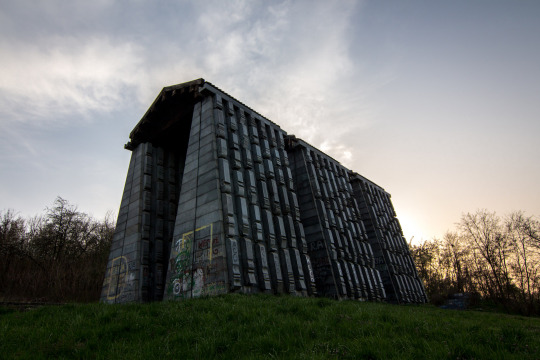
By framing socialist bloc architecture as classical ruins, and placing the democratic revolutions of Greece along side modern socialist revolutions, I'm making a point about historical narratives and associations. Ancient Mediterraneans didn't associate themselves with Northern Europeans, and to this day people are shocked by how "Eastern" Greek culture is. In many ways Islamic culture is more Roman than Western Culture. The Fascist fantasy of the past is just that: a fantasy. A tool they use for their political goals. They homogenize the diversity of Rome, they whitewash Greek statues, and they impose modern Classical music on cultures that wouldn't recognize it.
youtube
Liberals talk about how Ancient Greece is the foundation of Western Civilization™️, but they have no greater claim to it than Muslims or Buddhists. (The Greeks got around.) There is nothing in bourgeois political forms that's reminiscent of Athens, except perhaps for their hypocrisy towards their slaves. Many of the things the peasants and proletarians of Greece and Rome fought for were actively despised by Hamilton, Jefferson, and that whole lot of grifters. They hated universal male suffrage, they hated mass assemblies, they hated ballot measures, they hated rotation and sortition, and they hated land reform and debt abolition. They didn't love "the ancients," they loved their aristocrats.
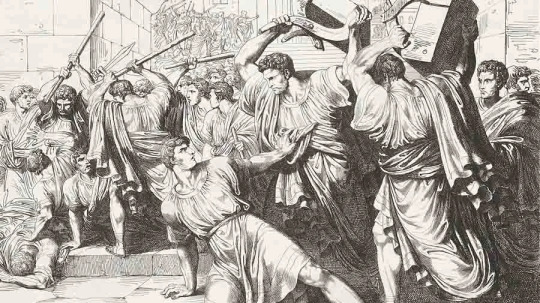
Socialists have long loved the defeated reformers and revolutionaries of the ancient past. The first modern communist called himself "Gracchus Babeuf." What I'm doing isn't special. The point is to take the things the bourgeois order claims it's built on, and show how fake it all is.

One day, the role the Classical Mediterranean plays in the modern superstructure will be replaced by the Socialist Bloc: a defeated experiment whose ruins global Communism will rest on. Their monuments, now covered in graffiti, will one day be visited by tourists the way the Parthenon is, to marvel at their glorious ambitions.
#socialism#communism#Marxism#history#Ancient Greece#Ancient Rome#architecture#historiography#Youtube#Soviet Union#Serbia
10 notes
·
View notes
Text
I am generally against drawing on historic buildings and monuments as some things should be preserved as they are* (check below cut for more opinions), but graffiti as an art form should be preserved or at least not actively erased**. It can and does add so much and it says even more. For example, on the other side of the street from the courthouse there used be some scribbles on the wall saying "bailiff, give me my life back :( I want a nice life :)" and I will never stop mourning the disappearance of that scribble. I hope the author got a nice life.
*an argument could be made that these monuments don't only exist in history, they exist now too as a neutral part of our worlds so we should have the same right to draw on them as ancient Romans did to draw on their buildings. However. I think neon green scribbly dicks do kind of ruin the aesthetic value of a 1000 year old house. It is kind of disrespectful. In my opinion.
** an argument could be made that the temporary nature of street poetry is an inherent part of it and reflects the inherently fleeting nature of our small, yet significant existence. Since, to me, street art is all about reflecting the average person. The non-genius, non-master. The kid whose name will never be in the history book.
3 notes
·
View notes
Text
Testaments Scratched Into Bathroom Walls
As I contemplated on what should/shouldn’t be considered occasional poetry, I found instances of these poems in my everyday life. I applied the criteria Herrera put forth of what makes an occasional poem onto the visual poetry of the alphabetized world around me, and I found occasional poems in the bathrooms of the Porter Dining hall; either physically etched into the paint by someone with a strong hand and a ballpoint pen, or written in thick sharpie of various colors on the inside of the bathroom stalls.
On the back of one of the stall doors in the bathroom is a message written in pink marker, “Anyone Else Struggling With Work-Genocide Balance? Free Palestine” There are words of descent for the testimonial question in black marker, “Did you do it? Did this save Gazans?”, “anti-semitic”, and a circled and crossed out, “Genocide” and next to it, “is not a buzzword”. Then, in thick red sharpie, “STFU”, “girl shut up. israel is a imperialist apartheid state and an embarrassment to jews around the world.” On the right wall is etched “Free Palestine”, then in black marker ,“From Hamas” and then in red sharpie, “no girl from the damn IDF.” These writings on the inside of the stall are incredible to me for a multitude of reasons. For one, I feel very lucky to be in this stall on this particular day because it is evident that there was a progression of time between each of these writings; these testimonials built off of each other and today I have arrived at the end of the completed sonnet. If I came earlier I might have missed the sass and energy from the red marker and be disappointed with the conversation ending with the black marker, and if I had came later I would have missed all of this completely. Two days after this day, the school repainted the inside of the stalls because of all of the writings. I would have never got to experience this incredible occasional poetry. What I got to read was an accessible, emotionally charged, uniting work, on the inside of bathroom walls. This is occasional poetry, practically textbook occasional poetry.
Herrera would be proud, I think, of the poets that congregated here in the bathroom of the Porter Dining hall. I see his hand on these walls, I see Corral as well. How are these different from "Testaments Scratched Into A Water Station Barrel"? The answer is they’re not, they just haven't been published and been given the "legitimacy" needed to be considered poetry. I am giving it to them however, in the form of this blog. I am telling you these are occasional poems, and they shall live on in publication within this blog. They shouldn't have to, but the literary world still requires it, and the physical world has covered up this great work. This the only place they will live on.
When I think like this, it makes me view these etchings in a similar vein to that of ancient engravings and Roman graffiti that are preserved for us to read today. We use those etchings to guess what the society was like at the time, and I kind of wish we could save these bathroom stalls for the same purpose. I feel like these should be taken out and sent to a museum and preserved for future generations, like pieces of Pompeii or The Berlin Wall. These feel like very profound occasional poems, made for others to read in the future to understand what was happening on campus at UCSC, on November 28, 2023. The school painted over them though. These artifacts only live on in my phone and on this blog. To have them removed feels akin to the burning of the library of Persepolis, akin to the erasure of a time and a place. I feel so fortunate to have seen the work and been able to document it, this was historical.
This blog in itself feels in part an occasional poem, or at least a documentary poem as I am documenting what I view to be an important historical moment.
3 notes
·
View notes
Note
if this is a stupid question im very sorry but do you know anything about sexual practices in ancient china or like around the 3k period. i dont know why but something makes me feel like people from that time would never give head and stuff. i cant explain it. pls ignore if its too dumb. ty
It's not a dumb question, because the history of sex and sexuality is an extremely complicated subject. Sexual practices and customs change rapidly, and what one generation considered taboo could be commonplace in the next.
Any research into the topic is further complicated by the fact that (particularly when dealing with officially sanctioned canonical histories from various dynasties that ruled classical and medieval China) a lot of our information comes from very specific sorts of people with very specific views. What Chen Qun has to say about sex probably isn't the same as what a carpenter in Luoyang might say; and both are very different from what a Xiongnu woman living at the same time would say; which is different from what one of the natives of Nanzhong would say. So even when we have someone on the record saying "this is acceptable, this is taboo . . ." we can't necessarily apply that outside of the author's particular social sphere.
An example from their near contemporaries in Rome: we have writings from the aristocratic class saying that oral sex was disgusting and no one did it. We also have graffiti preserved in Pompeii where one anonymous wrote "Theophilus, don't perform oral sex on girls against the city wall like a dog." While the graffito is disapproving of Theophilus's activities, Theo clearly didn't share the aristocrat's compunction about cunnilingus.he graffiti of Pompeii is of immeasurable historical value, forming one of the largest bodies of writing from common citizens of the Roman empire.
It's a big and complex subject. But it's also its own branch of research and not one I really delve into. The most important thing to remember is that you can't paint any society with a broad brush on this topic, and that we are always working with very limited information. No society is a monolith. Customs, taboos, and expectations varied with social class (and obviously among individuals, too).
7 notes
·
View notes
Text
My Month in Books: July 2023
Infamy: The Crimes of Ancient Rome by Jerry Toner Normally I’m always quick to pick up a book on the ancient Romans, but I grabbed this one double quick because Jerry Toner was actually one of my supervisors at university. He’s a fantastic teacher who runs a course on Roman popular culture and under his wise guidance I got to study (and write very long essays on…) everything from graffiti to…

View On WordPress
#a problem from hell: america in the age of genocide#a spool of blue thread#ancient rome#anne tyler#ben aaronovitch#book recommendation#book review#books#classics#emily henry#esther yi#fantasy#fiction#grady hendrix#greek mythology#happy place#history#horror#horrorstor#infamy: the crimes of ancient rome#jerry toner#memoir#natalie haynes#non-fiction#reading#rivers of london#romance#samantha power#stone blind#thriller
2 notes
·
View notes
Text
Daryl Dixon Sneak Peek, Part 3
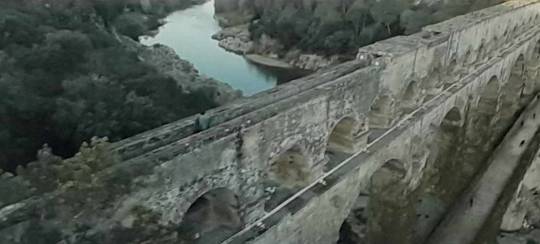


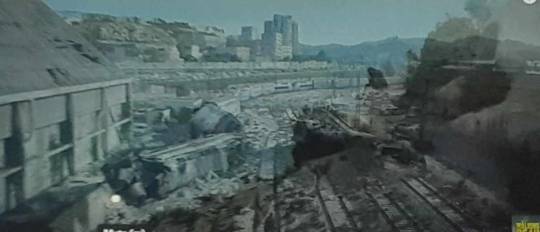
@wdway:
Not necessarily in order but here's most of the scenery where Daryl is on his journey. The one I'm lacking is the one with some large ancient looking ruins. I'm not sure @galadrieljones, if you want to take that mission on, to find out where those ruins are. And I promise I will stop using you as my personal Google source. Anyway the thing that caught my attention from the shots I took was Daryl's legs walking on the railroad tracks.
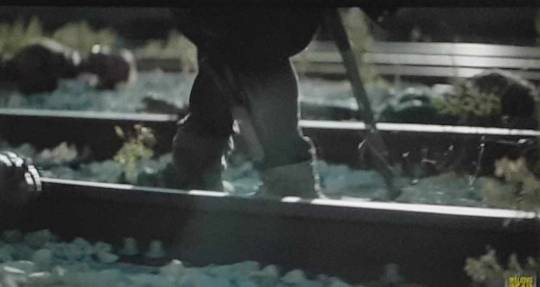
It wasn't until I enlarged that I realized he has a large knife strap to his left leg.
@twdmusicboxmystery:
For me, just the fact that he's walking along rxr tracks is huge. It's a callback to S4 when he walked along them toward Terminus with Beth. (As well as a callback to Denise, but she was a Beth proxy anyway.)
@galadrieljones:

Château des Baux-de-Provence

The other one is more difficult
@galadrieljones:
The Meunerie Hydraulique de Barbegal came up a couple times, but I can't pinpoint it as a perfect match. It's basically a very old ruin of some Roman water mills. It's also very close to Marseille so I wouldn't be surprised if it was it.

Searching a couple angles I have also come up with Chaine de la Pene which means Rocks of the Pene and is in the Alps near Marseille, where the old water mills are located, so I think that’s probably where he is in the second photo here.
@wdway:
This is showing all the landmark being between Marseille and Lyon with an actual Level 4 Laboratory in the Lyon area. This is very exciting to me.
@galadrieljones:
Yeah, these are all in southern france
all like a day or two hike from marseille
Sorry these are the Pyranees lol
i get my french mountains mixed up actually. idk which they are. oh well
i love this kind of thing lol i should have been a detective
or like a behind the scenes detective like i don't want to walk around crime scenes no thanks!
I just went ahead and looked it up since it’s the only one that’s not french military
@wdway:
I've mentioned this a couple of times but seriously when you get a chance you need to check out the Southern Cross. Using the Southern Cross and the five star points is how people in the southern hemisphere find true Due South. Just as we use the Big Dipper to help locate the North Star. They've got to have a reason to want us to know about star constellation.
@galadrieljones:
Built and owned by Fondation Mérieux. The Mérieux family is an old business dynasty from Lyon. From wikipedia: “Marcel Mérieux (1870–1937), ESCIL student in 1891, former assistant to Pasteur, founder in 1897 of Mérieux Biological Institute in Lyon (origins of the Institut Mérieux holding) in 1897 (now part of Sanofi Pasteur). Just want to point out that he was a former assisten to Louis Pasteur, who discovered the principles of vaccination.
The Foundation Mérieux is operated by something called INSERM, aka the French National Institute of Health and Medical Research. It’s a major governmental organization which includes research laboratories and hospitals. It’s the “only public research institution solely focused on human health and medical research in France.” It is in Paris. This is a lot to say that the Lyon facility is actually much more interesting than it initially seemed.
If Daryl was lead to Lyon, then this connection could also lead him to Paris. The thing is ofc the intitutes they use will probably be “fictional”; however, not necessarily, and/or they could be like a mixture of fact and fiction, which TWD does a lot. The fact that the CDC/Atlanta and Galveston have both been major settings tells me they know what they’re doing, like they’re thinking about this stuff.
@galadrieljones:

Firstly, however, I looked more closely at the “Pouvoir Des Vivants” shot and this was interesting. You can see underneath the graffiti references to “Museum National d’Histoire Naturelle,” which is the Natural History Museum of France and is located in Paris.
They’re kind of jerking us all around, that’s what this tells me lol. Not sure why, but it seems like, whatever he’s looking for, probably it is ultimately in Paris. Whether he gets there via the Lyon connection i have no idea but there is interesting backstory here!
@wdway:
I'm going to be lazy and ask you for the translation again on this. This time I'll try to note it so I won't have to ask again.
@galadrieljones:
I think it means “Power of the Living” something like that
Our one clue as to what this place might be called:
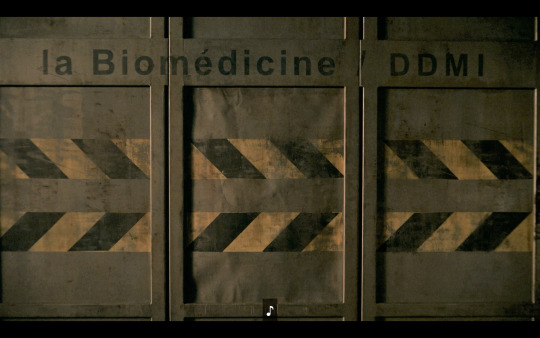
@wdway:
Thank you for the translation. This kind of goes in hand with the dialogue in TWB. I'll have to go back and check out what the guy that are killing the scientist, what he said to the woman. This slogan sounds like it could be a slogan for them. The power of the living.
I'm thinking that the place that Daryl is shown at is not the Laboratory where the TWB women was, but it might be a place that they gathered away from the company that's possibly watching them. A place where the scientists could work together without worrying about a watchful eyes on them. Where they could openly talk about what was happening to their work and where it went wrong and how they could fix it.
If they're not feeling comfortable about where their research, their work is going with the company and how I'm thinking the military has stepped in and taken it over. That maybe Daryl found out that there might be some records kept at that location where some of the scientist had gathered. Where some of them have been pulled from and killed like the guy in the coda talked about. Daryl might think that there could still be records, video recordings to check out. Just a out there speculation on my part.
@galadrieljones:
I love it !
@twdmusicboxmystery
Something this made me think of. And my gut reaction is that it's not practical...but maybe it is. We keep asking how Carol is going to show up there, and I Think your idea about the two of them leaving and getting separated is very plausible. And even the symbolism works. The two of them left together at the beginning of Find Me, and then separated purposefully at the beginning of Diverged. So, it works.
But just to throw something else out there... What if Daryl just goes back and gets Carol? I know how implausible it sounds, but hear me out. In S5, rather than run back into the church, he and Carol jump in the car and follow the Grady car to Atlanta. When Carol is taken into the hospital, rather than try to rescue her and Beth on his own, he takes Noah and goes to get the others. Daryl is just smart enough and humble enough to recognize when he needs help and can't do something on his own.
And of course there are the logistics of getting back across the ocean. Twice. But in S5, he just found a vehicle that got him back to the church and then back to Atlanta quickly. He also did this in S6, taking the Paddy truck after Dwight and Sherry double crossed him. If he runs into the CRM, they may have really fast, reliable sea vehicles that he could take, and go get Carol to bring her back much more quickly than he himself ended up there.
Anyway, I know it's still implausible, but I"m just reaching back to earlier seasons and trying to use them as a template. You know, like I do. ;D
@galadrieljones:
I think it’s plausible. Or he might have had access to a long range radio and called for her to come. I was also thinking about Find Me. Remember how Carol tagged along uninvited. Maybe she follows him?
@twdmusicboxmystery
Yeah, good points. If she thinks he's in trouble, she'll go to him as well. Find Me and Diverged proved that.
@galadrieljones:
Personally I would hope that she is invited or I actually love the idea of him asking her for help. (The difference between a hardcore Bethyler and a hardcore Caryler is that I am not at all threatened by him having an adult friendship w Carol )
@twdmusicboxmystery
Same. Totally.
@wdway:
@twdmusicboxmystery, I actually love your idea about Daryl going back for Carol. It's actually what I was going to somewhat work on last night and was just hit with a mental block and had to crash. I could go into a bunch of history but I'll just cut to the chase and say that I think he/ they may leave from Charleston, NC or Savannah, GA coastline. I know the Commonwealth was using a nearby Charleston as a meeting place but when Daryl mentioned in s11 rumors of guns selling in Charleston I immediately thought of Charleston, North Carolina.
During the Civil War there was blockade gun runners and black markets. There also sites of pirates in both Charleston and Savannah and Carol did find the pirate book in Daryl's apartment. Both famous for kidnapping/Shanghai man to crew ships. Daryl wouldn't necessarily have to physically go back and get Carol since all those community sites have been torn down. I could see him using some type of radio in order to talk to her. Kind of like they use the radio between Oceanside and Alexandria.
So you can see I'm totally on board with your theory. Even if he contacted her and told her his plans and where he was headed and she was going to come after. They would set up a place to meet, they might go that route now that she's going to join him n s2.
@wdway:
By tomorrow we will all be on board with a new episode, I won't spoil anything or at least not too much but I'll just make the statement that I've enlarged the pictures. And I was like, oh my God! when I saw that scene. I was just blown away with all the Daryl and Beth call backs from 30 Days, Still and Alone. Negan's speech about hope was definitely a real work/call back of Beth's monologue in Inmates.
I said this earlier this afternoon but I really can't think of any other way but that Maggie or someone, possibly Daryl went back to the Greene's farmhouse. Maybe that's one of the places Daryl went during his year of being gone from the Commonwealth.
@galadrieljones:
I’ve got my eyes and ears open. Also that’s really interesting the note about Charleston during the Civil War. Do you meant Charleston, SC?
@wdway:
My bad. Yes, I'm talking about Charleston South Carolina. They're also just a lot of ships, cruise, cargo and even submarines. In Fear we saw that huge shipyard with all those shipping containers, you would need cargo ships to move move those and basic manpower.
#beth greene#beth greene lives#beth is alive#beth is coming#td theory#td theories#team delusional#team defiance#beth is almost here#bethyl
6 notes
·
View notes
Text
Random Random Table Table
Use the golfball, if you have one.
1d100:
A Random Encounter Table
A Random Dungeon Dressing Table
A Random Mutation Table
A Random Character / Villain (is there a difference?) Quirk Table
A Random Item Table
A Random Overland Feature Table
A Random Weather Table
A Random Magic Effect Table
A Random Name Table
A Random “What Are My Rations?” Table
A Random Mushroom Table
A Random Disease Table
A Random Critical Hit Table
A Random Fumble Table
A Random Potion Table
A Random Character / Villain Motivation Table
A Random Language Table
A Random Ritual Table
A Random Ancient Cromlech Table
A Random “Where Was The Absent Player’s Character?” Table
A Random Trap Table
A Random Dungeon Entrance Table
A Random Dungeon Theme Table
A Random Freaky Habit The Noble Has Table
A Random Thing To Steal From Souls Table
A Random Prosthetic Table
A Random City Block Table
A Random Tiefling Demonic Feature Table
A Random Angel Form Table
A Random Familiar Table
A Random Magic Item Activator Table
A Random Steed Table
A Random “Why Is My Bedroll Full Of Ants?” Table
A Random Fetish, Magical Or Not, Table
A Random Unknown Continent Table
A Random Sphinx Riddle Table
A Random “How Is The Secret Door Hidden?” Table
A Random Monty Python Reference Table
A Random “How Does The New Character Appear?” Table
A Random Skirmish Tactic Table
A Random Barbarian Taboo Table
A Random Clerical Justification For Genocide Table
A Random New Mechanic Table
A Random Madness Table
A Random M.C. Escher Architecture Table
A Random Bard Band Name Table
A Random Sleeper Agent Activation Code Table
A Random Magical Tome Ward Table
A Random Morally Hard Scenario Setup Table
A Random Thing To Steal From Some Eroguro Manga Table
A Random Dragon Breath Weapon Table
A Random Evil Empire’s Aesthetic Table
A Random Common Tongue Slang Word Table
A Random Childhood Trauma Table
A Random Wizard’s Tower Defense Table
A Random Elemental Table
A Random Level 1 Party Quest Table
A Random Alternative For “You All Meet In A Tavern” Table
A Random Salad Dressing Table
A Random Fairytale Turned Dark Table
A Random Thing To Steal From Studio Ghibli Table
A Random Decadent Drug Table
A Random Shade Of Parchment Table
A Random Familiar Table
A Random Tavern’s Name Table
A Random Adjective Table
A Random Combat Conclusion Table
A Random Vampire’s Lover Table
A Random The Mars Volta Lyric Table
A Random Alternative Name For The Class You Picked Table
A Random Dungeon Boss Table
A Random Mysterious Benefactor Table
A Random Shield Shape Table
A Random Weirdness Of The Moon Table
A Random Minor Downtime Annoyance Table
A Random Way To Subvert A Trope Table
A Random Childhood Friend Table
A Random Suspicious Sausage Table
A Random End Times Preacher Table
A Random Healing Herb Table
A Random Helmet Table
A Random Local Folktale Table
A Random Rash That Appeared Overnight Table
A Random Musical Instrument Table
A Random Religious Crisis Table
A Random Justification For Monsters In A Room
A Random Cult Leader Table
A Random Number Table
A Random Modern Thing But Fantasy Table
A Random Debased Currency Table
A Random Warlock Patron Table
A Random Bar Patron Table
A Random Dungeon Graffiti Table
A Random Fantasy Heartbreaker Table
A Random Real World Culture But Fantasy Table
A Random Metaphor For Rebirth Table
A Random Pseudo Roman Name Table
A Random Fingernail Length Table
A Random Time Signature Table
A Random Random Random Table Table
#dungeon crawler#dungeons and dragons#tabletop rpg#random table#random tables#d&d#dnd#osr#meta#ttrpg#you can write one if ya wanna#d100#sorta pretentious
2 notes
·
View notes